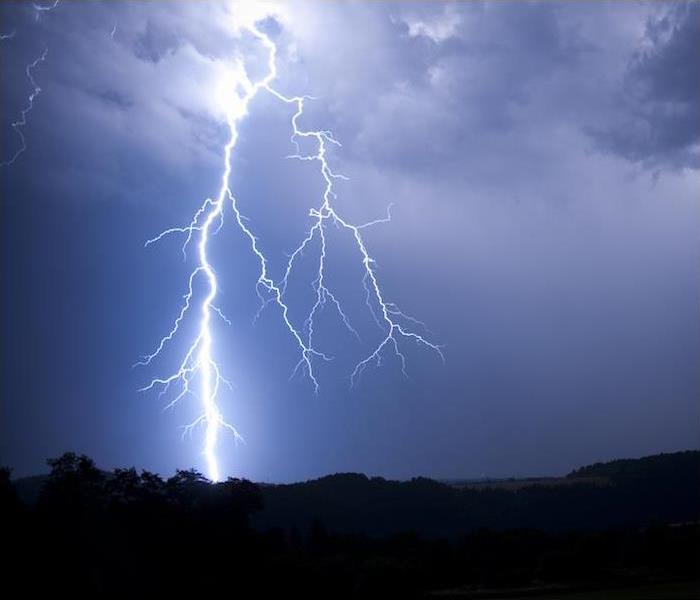Lightning Safety for Outdoor Workers
7/5/2021 (Permalink)
 If you have any damage from a storm and/or water, call SERVPRO of Carrollton. We are your local restoration team.
If you have any damage from a storm and/or water, call SERVPRO of Carrollton. We are your local restoration team.
Lightning as an occupational hazard is often an afterthought, but it shouldn’t be. An average of 47 of all occupations require outdoor work at some point in the day.
That means almost half the American workforce is outside for some period of time every day, and many fields require a much higher percentage of outdoor time. When thunderstorms arise, those workers are at elevated risk of lightning strikes and other dangers.
Safety Best Practices for Outdoor Work
OSHA and NOAA recommend several broad safety practices for business who have workers outdoors. These include:
Being informed by NOAA weather reports. Employers and supervisors should be aware of reported and upcoming weather events before sending workers outside. Weather.gov and local outlets will make weather updates as inclement weather comes toward the area. Employers should consider rescheduling events, jobs or activities outdoors if thunderstorms are headed in. Darkening clouds and increased wind speeds can also be indicators of dangers weather afoot.
Seeking shelter in buildings. Workers should be informed before heading to outdoor jobs what nearby buildings they should seek out for shelter if they hear thunder or see lightning. These buildings should be fully enclosed and outfitted with plumbing and electricity. Once inside, workers should remain indoors at least a half hour after the last peal of thunder before returning to work. Remember, the fact that you’re not getting rained on doesn’t mean you’re not in danger—lightning can strike up to 10 miles away from the nearest rainfall.
Using vehicles as a second option. If safe buildings aren’t accessible, workers should be guided to hard-top vehicles with all windows rolled up, where they should remain for the duration of the storm and 30 minutes after thunder stops.
Practicing phone safety. Corded phones are still used in many buildings, but they shouldn’t be used in a building during a thunderstorm except in emergency situations. Cell phones are safe to use.
Business owners and supervisors should also have an emergency action plan for storms in place, with written protocols for lightning safety outlining company storm procedures. Lightning and storm safety training should also be implemented, so that workers know where to go in emergencies and what to expect regarding communication when storms approach.
We’re here to help with any damage done by thunderstorms, whether it be from water, fire or lightning. Call or click today to experience the SERVPRO difference.




 24/7 Emergency Service
24/7 Emergency Service